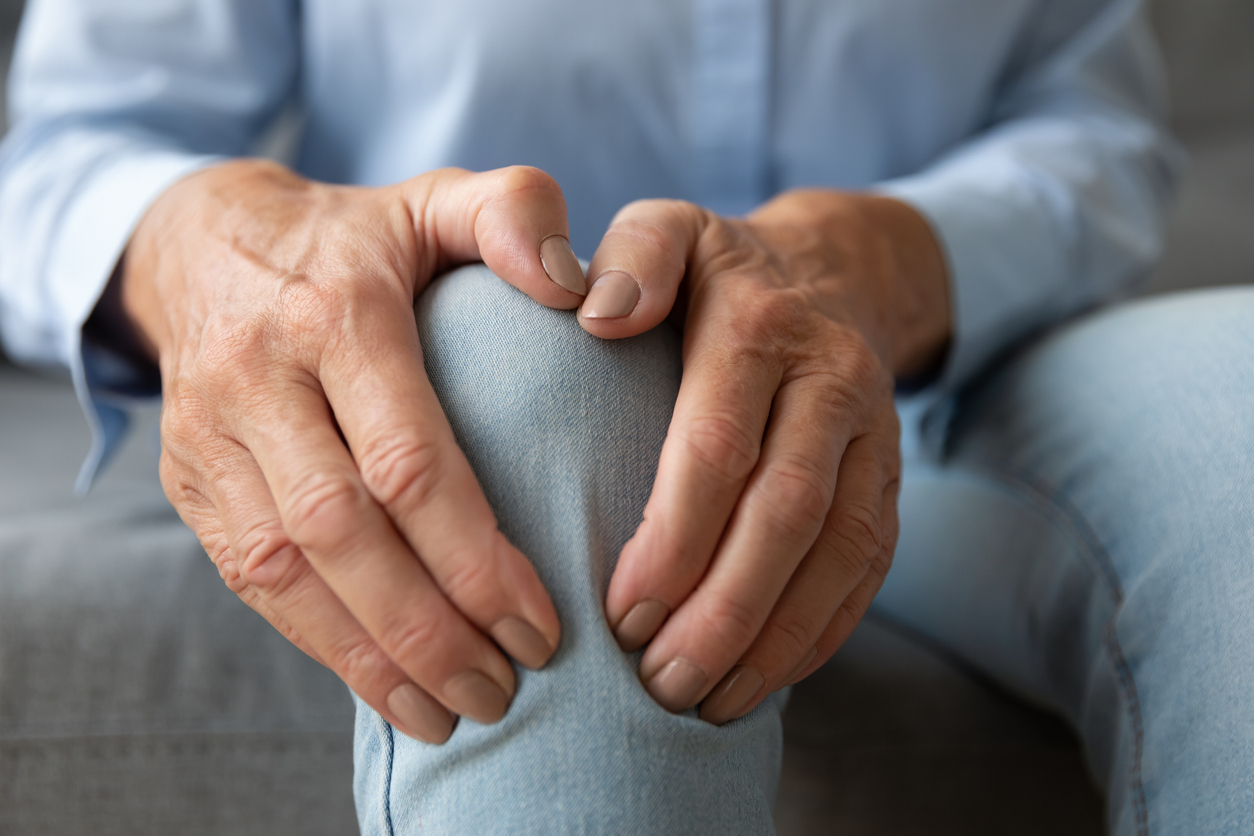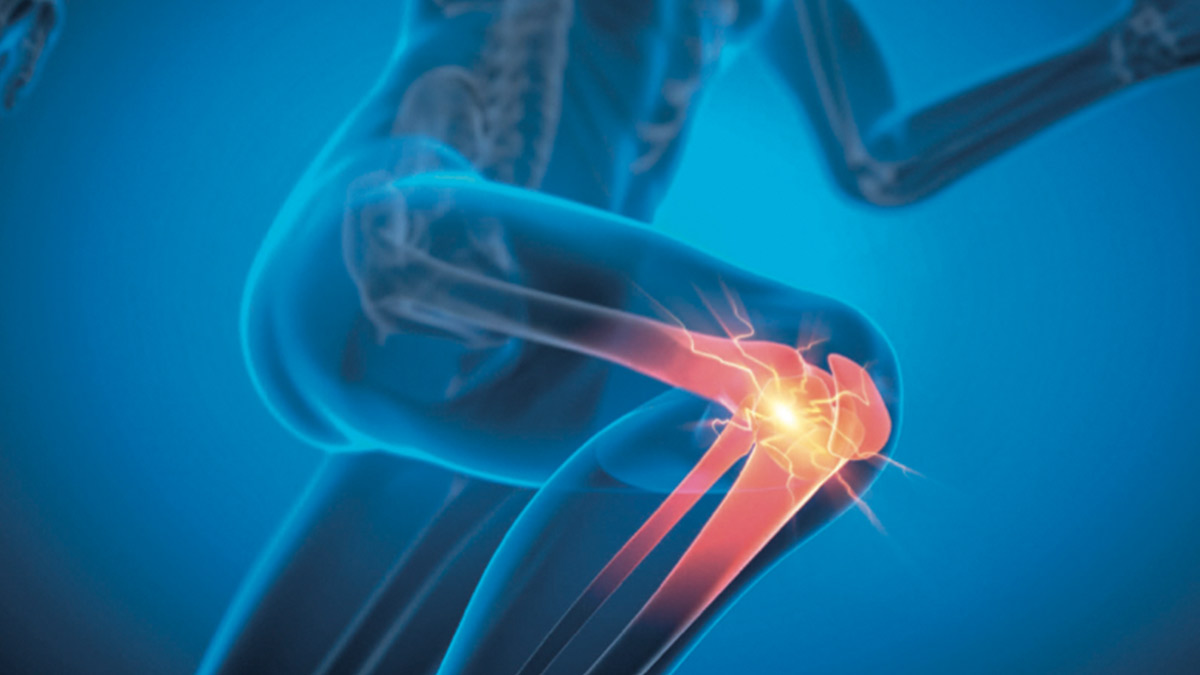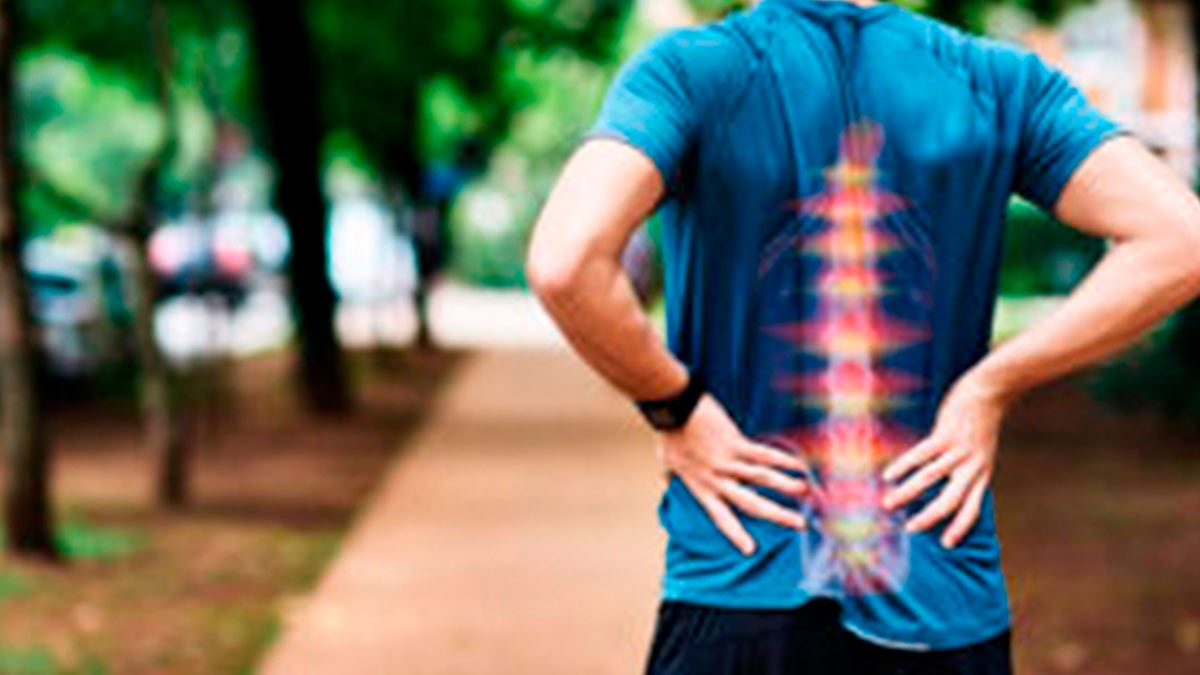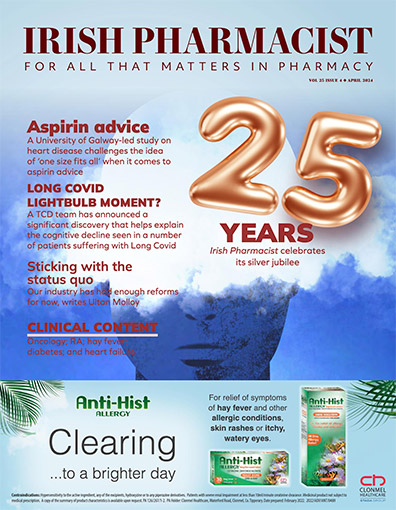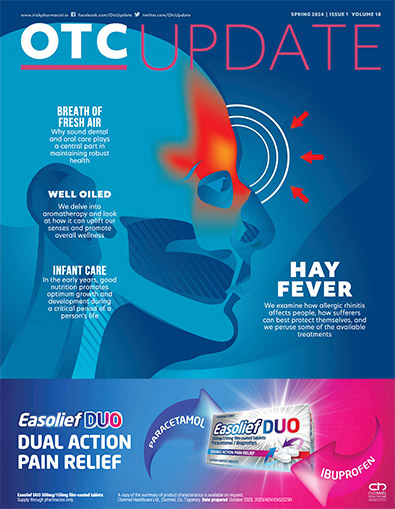Eamonn Brady MPSI looks at clinical considerations in osteoporosis and some of the tools to help reduce the associated risks for people with the condition
Osteoporosis literally means ‘porous bones’. It’s a condition where bones lose density, causing them to become weak and more likely to fracture. About one-in-two women and one-in-five men over 50 will fracture a bone because of osteoporosis. According to the Osteoporosis Society of Ireland, it is estimated that 300,000 people in Ireland have osteoporosis.
Osteoporosis can affect all age groups, but it’s most common in postmenopausal women. Having osteoporosis doesn’t automatically mean that bones will fracture; it just means that it’s more likely. In Europe, osteoporosis accounts for more disability than many non-communicable diseases, including rheumatoid arthritis, Parkinson’s disease and breast cancer.1
Symptoms of osteoporosis
Osteoporosis may have no symptoms initially, and patients may be unaware of any problems until they fracture a bone or start to lose height.
Symptoms can include:
- Sudden, severe episodes of upper, middle or lower back pain.
- Loss of height (greater than 2cm).
- Development of a hump on the back or a change in body shape, for example, the rib cage may rest on the pelvic rim or a pot belly develops.
Complications of osteoporosis
Broken wrists, hips and spinal bones are the most common fractures in people with osteoporosis. Fractures can, however, occur in any bone. They can result in pain, disability, loss of independence and a drop in self-esteem.
Diagnosis of osteoporosis
Osteoporosis is usually diagnosed in hospital, often after a fall or a bone fracture. Bone density is measured using a dual-energy x-ray absorptiometry (DEXA) scanner. Osteoporosis is diagnosed when bone density is found to be significantly lower than average. DEXA scans are the gold standard for the diagnosis of osteoporosis. Scans are painless and take approximately 10-to-20 minutes.
The results of the scan will be made available immediately or very soon after, depending on where it is done. Scan results will be given in the form of a T-score. A T-score value greater than -1 shows that bone density level is normal and there is no osteoporosis. A T-score value of between -1 and -2.5 indicates osteopaenia. This is the early stage of osteoporosis and is a warning that a patient must start taking care of their bones. A T-score of below -2.5, meanwhile, indicates osteoporosis.
There is no comprehensive osteoporosis screening programme in Ireland. People generally only get a DEXA when referred by their GP. The average waiting time to get a DEXA scan in 2008 for public patients was 20 weeks.15 Private patients can get a scan upon request in private facilities. The website of the Osteoporosis Society of Ireland has a comprehensive list of all locations in Ireland where DEXA scans are performed. It lists DEXA scan locations on a county-by-county basis and includes both private and public hospitals and clinics. Click on ‘Arrange a scan’ on the Osteoporosis Society website to find a location closest to you.
Causes of osteoporosis
Healthy bone consists of a strong mesh made of protein and minerals (particularly calcium). This mesh is living tissue that is constantly being renewed by two types of cells. One type builds-up new bone (osteoblast cells) and the other breaks down old bone (osteoclast cells). Up to our mid-20s, our skeleton is strengthened, but from our 40s onwards, our bones gradually lose their density as a natural part of ageing.
There is a genetic influence on osteoporosis, so women with family members with the condition are more at risk. However, other factors also increase the risk of osteoporosis. The breakdown of bone is quicker in women who have been through the menopause. This is because of a lack of the hormone oestrogen. Oestrogen reduces the amount of bone broken down and so helps to protect against osteoporosis. In women, oestrogen is made in the ovaries from puberty until the menopause. Anything that reduces the number of years that a woman produces oestrogen may increase the risk of osteoporosis. These include:
- An early menopause (before the age of 45).
- A hysterectomy before the age of 45 (especially if both ovaries are removed).
- Excessive exercising — this can reduce hormone levels and as a result, periods may stop for a prolonged time.
Other factors include:
- Age — the risk increases with age.
- Race — Caucasian or Asian races are at greater risk than African-Caribbean.
- Gender — women have smaller bones than men.
- A family history of osteoporosis, particularly a history of hip fracture in a parent.
- A previous fragility fracture (fracturing a bone after only a minor accident).
- Long-term immobility (ie, confined to bed).
- A very low body mass index.
- Excessive alcohol consumption or smoking.
- Low levels of vitamin D or dietary calcium.
- Some medication and disorders can increase risk, including:
- Long-term use of corticosteroids.
- Long-term use of heparin.
- Aromatase inhibitors (for breast cancer treatment).
- Overactive thyroid disorders.
- Rheumatoid arthritis.
- Digestive disorders that affect nutrient absorption, such as Crohn’s disease, chronic liver disease, or coeliac disease.
The breakdown of bone is quicker in women who have been through the menopause
Causes in pre-menopausal women
Oestrogen generally prevents osteoporosis in premenopausal women. However, there are certain medical conditions and medications which reduce oestrogen level and hence cause early-onset osteoporosis.
Examples include:
- Hypogonadotropic hypogonadism due to low weight, eating disorders, excessive exercise, hyperprolactinemia, and hypopituitarism.
- Hypergonadotropic hypogonadism (premature ovarian failure) is associated with bone loss if oestrogen is not replaced. Women with Turner syndrome (a condition which occurs in less than one-in-2,500 due to abnormal X chromosome) may have an additional selective reduction in bone mineral density that is independent of oestrogen exposure.
- In premenopausal women with breast cancer, chemotherapy often results in premature ovarian failure, and as a result, oestrogen deficiency and bone loss.
Drugs that may be associated with bone loss in premenopausal women include glucocorticoids; anticonvulsants, ie, phenytoin; antidepressants, ie, lithium; and anticoagulants, ie, warfarin and heparin.
Non-pharmacological management
Non-pharmacological management includes prevention of falls and modification of risk factors including diet, smoking and excessive alcohol intake. Important measures aimed at preventing falls include attention to modifiable factors, including checking eyesight, exercise, reduced consumption of medication that alters alertness and balance, and improvement of the home environment. There is controversy on the use of hip protectors to prevent fractures, with recent evidence casting doubt on this preventive measure.2,3
Attention to diet is important, because there is a high prevalence of calcium and vitamin D insufficiency in the elderly, particularly those with chronic conditions. Calcium is necessary for maintaining bone health and vitamin D enhances the absorption of calcium. A diet with adequate calcium (>1,200mg daily) and vitamin D (800IU daily) is recommended for those with risk factors.
Adults aged over 50 years often only consume 700mg calcium daily, so the use of supplements, including fortified food products, may be required. Evidence for the use of calcium and vitamin D supplements to maintain optimum bone density in healthy adults with normal dietary intake is limited.4,5 However, a recent systematic review found that the ingestion of calcium or calcium with vitamin D reduced osteoporotic fractures in men and women aged over 50 years by 12 per cent.6 They should be considered for patients in nursing/residential homes and the house-bound elderly. Immobilisation is an important cause of bone loss and should be avoided whenever possible.
Self-help
Osteoporosis patients need to be careful of vigorous, high-impact exercise. However, leading an active lifestyle will improve balance and co-ordination and develop muscle strength. All these can reduce the risk of falling and fracturing a bone. Beneficial exercise includes swimming, gardening, walking and golf. Eating a diet rich in calcium is important for maintaining healthy bones. Dairy products and green-leafed vegetables are good sources of calcium. Low or non-fat versions of dairy products deliver just as much if not more than their fattier counterparts. If a patient cannot stomach dairy, calcium-fortified orange, grapefruit, and apple juice contain just as much as milk does.
The body also needs vitamin D to absorb calcium properly. Vitamin D is found in certain foods, including cod liver oil, oily fish such as sardines and herrings, margarine and egg yolks. It’s also made by the skin when exposed to sunlight. The National Osteoporosis Society recommends about 20 minutes of sun exposure to the face and arms every day during the summer to provide enough vitamin D for the year. Avoid fizzy drinks and reduce caffeine, salt or animal protein, as these can affect the balance of calcium in the body.
How much vitamin D is needed to prevent fractures?
Research has found that a daily supplement of 700-to-1,000IU of vitamin D reduces the risk of fractures from falls among older people by 19 per cent. In fact, the British Medical Journal shows that a dose of less than 700IU per day has no effect in reducing fractures. For example, an Ideos or a Calcichew D3 tablet only has 400IU (500mg) of vitamin D, therefore it important that a patient takes two daily to get the sufficient amount of vitamin D.
Beneficial exercise includes swimming, gardening, walking and golf
Risk of osteoporosis from corticosteroids
Patients on corticosteroids require preventive treatment for osteoporosis if the patient is starting oral corticosteroids and is likely to be on these for at least three months. More than three or four courses of corticosteroids taken in the previous 12 months is considered to be equivalent to more than three months of continuous treatment. If the intermittent courses are spread over a much longer term, the risk is not as high. Evidence supports the use of bisphosphonates as a first-line treatment.
Physiotherapy Falls Prevention Programme
Many physiotherapy departments in Ireland have a falls prevention programme that GPs or hospital consultants can refer a patient to. Patients with a history of falls, fear of falling and/or reduced mobility are often referred to a physiotherapy falls prevention programme. The programme is often based on the OTAGO exercise programme and aims to strengthen muscles, thus preventing falls and reducing the risk of fracture if the patient does fall. Contact the physiotherapy department at your local hospital to check if this programme is available in your area.
HSE fall prevention policy
The following is the HSE fall prevention policy outlined in their 2008 fall prevention report:15
All older persons should be asked the following at least once a year:
- Have you fallen during the past year? If yes, did you fall more than once?
- Have you any problems with your balance?
- Are you afraid of falling?
- Older persons who have had a single explained fall should be tested for gait and balance annually.
- Older persons who:
- Have recurrent falls (two or more in the last year).
- Had an unexplained fall.
- Have problems with gait and balance.
- Have a fear of falling.
- All of the above should undergo a multi-factorial assessment carried out by an experienced clinician.
- The HSE states in its report that the following risk factors and interventions that have been shown to reduce falls and should be included in multifactorial assessment and intervention are:
- Individualised exercise programme that includes a combination of resistance training, gait, balance, and co-ordination training.
- Medication review and withdrawal of psychotropic and other medications.
- Home environment assessment and modification by health professional.
- Managing postural hypotension.
- Vision assessment and referral for intervention.
- Assessment for vitamin D deficiency and insufficiency and treated if identified.
- Identification of foot problems and appropriate treatment.
- Behavioural modification and educational programmes should be considered.
- The following is a recommendation for residential long-stay care settings in the 2008 HSE fall prevention report.15
- All residential care settings should have a fall prevention policy and be resourced to implement it.
- All residents should receive a fall risk assessment annually. A fall risk assessment should also take place on admission and when health status changes occur.
- Falls in residential care and nursing care homes should be recorded on a register. Each fall should be critically analysed for corrective action.
The fall prevention procedures of residential care homes are assessed in all Health Information and Quality Authority (HIQA) inspections.
Medication
Bisphosphonates. Examples include alendronic acid, risedronic acid and ibandronic acid. They work by slowing-down bone loss. They are taken once-weekly but ibandronic acid (Bonviva) is once a month. They can reduce the frequency of fractures by 50 per cent. Bisphosphonates have been used in trial extensions for up to 10 years, which suggests that bone quality remains normal and that reductions in fracture risk are sustained for as long as treatment continues.7 However, it is important that it is reviewed every two years. There is no difference in the efficacy or safety profiles of bisphosphonates in patients aged under 65 and over 65.
The oral bioavailability of bisphosphonates is low and impaired by food. Oral formulations must be taken fasting, sitting upright with a full glass of water, followed by no food for up to one hour. This is to reduce the gastrointestinal effects experienced by patients. Compliance with treatment is a problem, particularly in view of these requirements.8,9,10
The most common side-effects are gastrointestinal, including non-ulcer dyspepsia, oesophagitis, oesophageal strictures (narrowing of oesophagus), gastric and duodenal ulcers. Bisphosphonates are contraindicated in the presence of abnormalities of the oesophagus, and hypocalcaemia. There have been reports of osteonecrosis of the jaw (ONJ) with their use, particularly with IV formulations given in high doses for metastatic bone disease.11-13 ONJ is a condition where the jaw breaks. The prevalence of ONJ with bisphosphonates has been estimated to be about one-in-100,000 patient-years, which is similar to the prevalence in the overall population.13
Parathyroid hormone peptides, ie, teriparatide (Forsteo). It works through the fact that it is very similar to parathyroid hormone; this hormone helps to regulate calcium levels and the activity of cells involved in bone formation. It is a subcutaneous injection (into side of stomach usually); one injection is used daily. A trained nurse from Lilly will give training in the patient’s home initially for free. Trails show it reduces fractures by an average of 41 per cent. It is only used if a patient cannot tolerate other treatments. The most common adverse effects are nausea, limb pain, headache and dizziness. Contraindications include severe renal impairment, pre-existing hypercalcaemia and metabolic bone disease other than primary osteoporosis.
The selective oestrogen receptor modulator, ie, raloxifene (Evista). This is a synthetic hormone that mimics the effect of oestrogen on the bones. One tablet is taken daily. It reduces risk of fractures by approx 47 per cent. There have been no studies to show the effect of Evista for more than five years. However, according to the manufacturer, there is no minimum time that Evista should be used once an improvement has been shown.
Raloxifene has been associated with an increased risk of venous thrombosis similar to that for hormone therapy, and with exacerbation of hot flushes.14 An increased risk of death due to stroke has been reported with raloxifene, and it should be used with caution in women with a history of, or risk factors for, stroke. It is contraindicated in women with child-bearing potential, history of venous thromboembolism (VTE) or unexplained uterine bleeding, hepatic impairment and severe renal impairment.
Hormone replacement therapy (HRT) relieves symptoms of the menopause by restoring hormones to a premenopausal level. HRT has also been shown to reduce osteoporosis. The use of HRT for osteoporosis prevention is restricted to short-term use for younger postmenopausal women with menopausal symptoms at high risk of fracture.1
Strontium ranelate, ie, Protelos, was a drug in sachet form that could be prescribed if a patient could not take bisphosphonates. It stimulated new bone to grow and reduced bone loss. However, it was discontinued by the manufacturer in 2018 due to lack of demand.
References
- National Osteoporosis Guideline Group – Executive summary of Osteoporosis: Clinical guideline for prevention and treatment, downloaded from http://www.shef.ac.uk/NOGG.
- Sawka A, Boulos P, Beattie K, Thabane L, Papaioannou A et al, Do Hip protectors decrease the risk of hip fracture in institutional and community dwelling elderly? A systematic review and meta-analysis of randomized controlled trials. Osteoporosis International 2005; 16:1461-1474.
- Kiel D, Magaziner J, Zimmerman S, Ball L, et al, Efficacy of a hip protector to prevent hip fracture in nursing home residents. JAMA 2007; 298:413-422.
- Kanis JA, Burlet N, Cooper C, Delmas PD, Position Paper: European guidance for the diagnosis and management of osteoporosis in postmenopausal women. Osteoporosis International 2008; 19:399-428.
- Qaseem A et al, Pharmacologic treatment of low bone density or osteoporosis to prevent fractures: A clinical practice guideline from the American College of Physicians. Ann Intern Med 2008; 149:197-213.
- Tang BMP, Eslick GD, Newson C, Smith C, Bensousson A, Use of supplementation or calcium in combination with vitamin D supplementation to prevent fractures and bone loss in people aged 50 years and older: A meta-analysis. Lancet 2007; 370:657-66.
- Liberman UA, Long-term safety of bisphosphonate therapy for osteoporosis – a review of the evidence. Drugs Ageing 2006; 23: 289-298.
- Rabenda V et al, Adherence to bisphosphonate therapy and hip fracture risk in osteoporotic women. Osteoporosis Int 2008; 19: 811-818.
- Chaiamnuay S, Saag K, postmenopausal osteoporosis. What have we learned since the introduction of bispohosphonates? Rev Endocrine Metabolic Disorder 2006; 7:101-112.
- Lekkerkerker F et al, Adherence to treatment of osteoporosis: A need for study, Osteoporosis International 2007; 18:1311-1317.
- Edwards B et al, Pharmacovigilance and reporting oversight in US FDA fast-track process: Bisphosphonates and osteonecrosis of the jaw. Lancet Oncology 2008; 9:1166-1172.
- Bisphosphonates and osteonecrosis of the jaw in Drugs Safety Newsletter, Irish Medicines Board 2006; 23: 2. Available on www.imb.ie.
- Reid IR, Cundy T, Osteonecrosis of the jaw. Skeletal Radiolog 2009; 38:5-9.
- SPC for Evista (raloxifene) www.medicines.ie.
- HSE. Strategy to prevent falls and fractures in Ireland’s ageing population. Report of the National Steering Group on the Prevention of Falls in Older People and the Prevention and Management of Osteoporosis throughout Life. June 2008; p66, 69.
